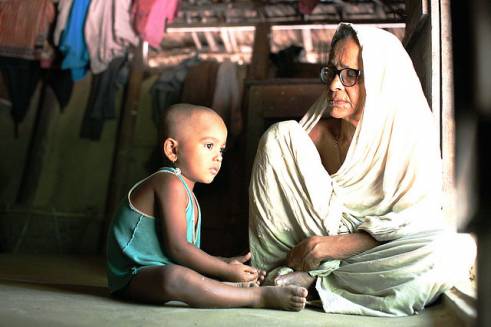By Rhiannon Leon
Last week, thousands of older people from across India gathered in New Delhi to peacefully protest for their rights. Days later, on 7 March, they heard the Government of India make an unprecedented commitment to improve the Indira Ghandi National Old Age Pension Scheme (IGNOAPS) and ensure every older person receives a pension.
The scheme has faced mounting criticism for its small size and low coverage. Targeted at older people in households classified as living below the poverty line, it covers only around 20% of India’s estimated 84 million older people. The amount people receive varies between states, with some people receiving as little as Rs.200, or US$4, a month.

In recent years, the Pensions Parishad, an Indian civil society organisation, has mobilised older people to carry out a number of protests across the country, supporting them to call for an abolition of targeted coverage in favour of a universal scheme, as well as an increase in the pension. These protests have also supported intense lobbying by local and national NGOs, including our Affiliate, HelpAge India.
“Everyone should get a pension”
On 7 March, Jairam Ramesh, the Rural Development Minister, announced that he had been authorised by the Prime Minister to negotiate an expansion of the pension system.
Speaking to the protesters in Parliament Street, Ramesh stated everyone’s right to a pension and that targeting based on poverty line classification would “be done away with”. Instead, targeting which excludes only the wealthy and those who receive contributory pensions, aims to ensure that everyone receives a minimum income in old age.
Ramesh also announced an increase in the benefit level of the current pension scheme to Rs.300, or US$6, a month, while at the same time acknowledging that this amount should be increased.
However, the minister stopped short of a commitment to Pension Parishad’s calls for the benefit level to be raised to Rs.2,000, or US$40. It is expected that, in the coming weeks, talks between the Pensions Parishad and the Government will attempt to negotiate an acceptable increase.
Timeline for implementation
Despite a strong commitment, the timeline for implementation of these changes is uncertain, a cause of concern for the Pension Parishad.
With no firm schedule for implementation, and only a vague statement that these changes will happen within the next five years, protests may continue.
“We cannot agree to this indefinite timeline,” said Aruna Roy of the Pensions Parishad, “if they will not agree to implement changes this year, we will come back with larger numbers”.
A step forward
An expanded social pension would undoubtedly improve the lives of older people and their households in India.
Evidence demonstrates that even low-level social pensions can have a significant impact on older people, contributing to their basic needs, allowing them to invest in ways to earn a living and improving their sense of wellbeing.
“India has the second largest population of older people in the world. If this expansion were to go ahead it could constitute one of the greatest single steps forward in income security for older people,” said Charles Knox-Vydmanov, HelpAge’s Social Protection Policy Adviser.
